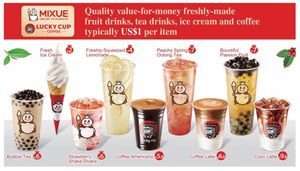After enduring challenging months, the Indian fast-moving consumer goods (FMCG) sector appears to be at a turning point. Dabur India (NSE:DABUR) has seen its share price plunge 3.7% recently; quite the dip! Nevertheless, the fundamentals of the company seem fairly solid, stirring interest among financial analysts.
One key metric they focus on is return on equity (ROE), which reveals how the company utilizes shareholder capital. Specifically, Dabur India's ROE stands at 16%, consistent with the industry average. This statistic indicates the profit generated for every dollar of shareholders' investment. For every ₹1 of shareholder capital, Dabur generates ₹0.16 in profit—certainly worth noting.
While Dabur India's ROE is respectable, the company's five-year net income growth rate lags at just 3.8%. This raises eyebrows, prompting investors to ponder what influences growth levels. Analysts suggest high dividend payouts could be partly responsible, as Dabur maintains a substantial payout ratio of 54%. With management prioritizing shareholder returns over reinvestment, questions hang over Dabur's growth potential.
On the broader scale, the Nifty FMCG index recently ended its 15-session losing streak, indicating potential recovery after experiencing its lowest performance since the index's inception on September 22, 1999. This prolonged slump was largely attributed to weak urban demand, which fell short against growing rural consumption—there appears to be light at the end of the tunnel.
During the period from February 1 to February 21, 2025, the Nifty FMCG lost about 9.27%, with the most significant drop recorded on February 11, where the index plummeted 1.94%. Despite this, on February 24, it managed to add ₹9,373.7 crore to its market capitalization, closing the session at 52,285 points. Beverage stocks buoyed the gains, with notable performances from companies like Varun Beverages and United Spirits.
Urban demand, especially, has been muted recently. Analysts from Nuvama Research have reported rural volume growth reaching 9.9%, which is effectively double urban growth at 5%. It's as if the heartbeat of rural markets is slightly more vibrant, thanks to rising rural incomes and government measures boosting consumption.
Yet, as urban demand remains tepid, the FMCG sector continues to juggle inflation concerns and rising input costs, particularly for raw materials like palm oil and coffee. These economic pressures affect gross margins for companies such as Godrej Consumer and Tata Consumer, compelling them to be cautious about passing costs onto consumers.
While these developments create stress for some companies, rural-oriented businesses like Dabur are anticipated to outperform their urban-centric counterparts. For example, reports suggest Dabur may surpass Colgate's performance in the toothpaste segment. Though competitive pressures persist, the potential for rural consumption growth poses promising opportunities—especially as consumers look for affordable products.
Despite the positive forecast for rural FMCG performance, analysts urge caution. Rajesh Sinha from Bonanza Portfolio noted, "For the first time in 20 years, these stocks are underperforming, with the Nifty FMCG index dropping 20.2% since September 2024." This alarming trend deviates from typical FMCG behavior, emphasizing the necessity for investors to reconsider their strategies.
Then there's Hindustan Unilever (HUL), another giant grappling to regain ground after its stock fell over 26% from its record high. Despite considerable fluctuations, HUL's recent trading activity, which managed to gain slightly after declines, showcases persistent uncertainty within the sector.
HUL's net profit at ₹3,001 crore during the third quarter of FY25 signifies 19% growth from the previous year. Yet, with market volatility impacting sentiment back to mid-October 2024, the company's stock performance reflects broader market dynamics and response to external factors, including the Union Budget.
Looking forward, brokers maintain bullish long-term sentiment. Analysts from Bank of Baroda Capital Markets reiterated buy ratings for HUL, insisting the muted demand is merely transitory and underpinning future potential. Meanwhile, KR Choksey suggested premiumization efforts and strategic acquisitions will accelerate recovery for the industry.
Without doubt, the Indian FMCG market is presently experiencing turbulence; yet there exists potential for revival, particularly as rural demand strengthens amid previously noted challenges. How companies leverage their ability to tap rural consumption will be key to their performance moving forward.
Time will tell whether this sector can scale back to its historical highs, but with consumers focused on affordable options, market players are bound to adapt and make meaningful strides.



